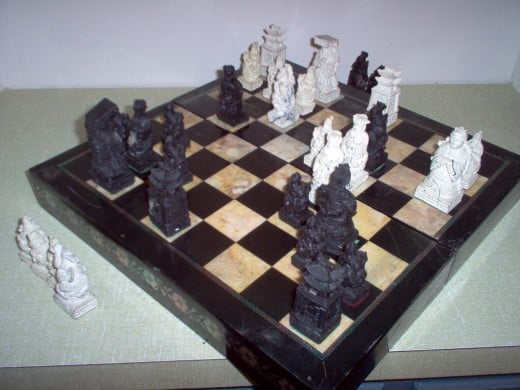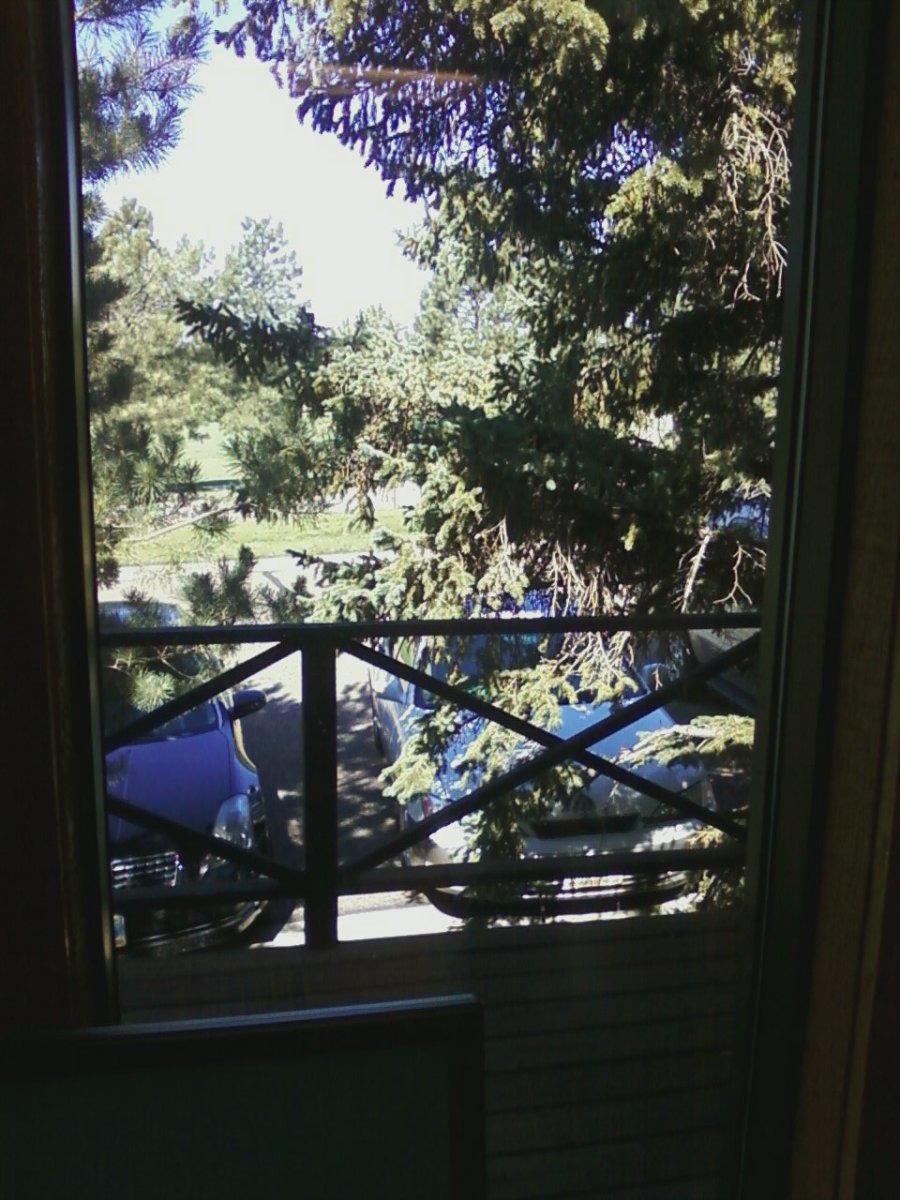- HubPages»
- Books, Literature, and Writing»
- Books & Novels»
- Fiction»
- Science Fiction & Fantasy Books
The Time Travelers Dilemma – (6) The Sieve
The Sieve

Lectures
From a lecture by Dr. Nakey: While the visualization of a tangled ball of thread provides some insight into the complexities associated with predicting when or where any particular timeline might intersect with another time, it tends to encourage one to believe that these contacts occur far more often than they actually do. If one considers the overall distribution of mass in the universe in three dimensional space, they will note that mass is sparsely distributed, with occasional collections of mass in the form of galaxies containing occasional dense spots in the forms of stars and their associated planets and meteor clouds. When the time-lines for these entities are visualized as evolving position histories, it is easy to see that while sparsely distributed in space, the overall history itself is fairly continuous in time. This resulting visualization can be thought of as being something like a sieve, the old kitchen tool that was used to strain freshly boiled noodles.
Joe Smith - Games People Play, from OLDIESMS on YouTube
The Games People Play
The young man's first high tech job had an interesting side-effect. The young man was quiet and rarely spoke of his job. It is natural in casual conversation to inquire about other people’s jobs, so this quiet reluctance to speak tended to spark curiosity. Those who observe this sort of behavior tend to create their own explanations, based on their own perception of why silence is chosen. There was one side effect that the young man quickly took note of. When faced with unknowns, people have a rather quick tendency to assume the unknown is somehow related to their worst fear. These fears are a subtle type of paranoia, if you are a tax-evader you fear the IRS, if you are a drug dealer you fear the DEA, if you are an arms dealer you fear the ATF, if you are a criminal you fear the police or the FBI, and if you are a spy you fear those who hunt spies (they will remain nameless). You have a tendency to look for what you fear, and the young man’s grandfather once pointed out that it was a twist on the old saying ‘seek and you shall find’, then he would pause and add ‘sometimes whether it is there or not’. Once the young man understood this phenomena, he quickly learned to just sit back and listen to the speculation about what his job was. The truth was that this was far more entertaining than anything he could offer anyway. Unfortunately, this too had its side effects, and the young man eventually found himself being approached by folks who claimed to have heard he was part of this, that or the other organizations and would offer up information. People are not always quick to check out rumors, particularly if they are consistent with the other rumors they have heard. Those rumors spread too, eventually morphing into claims that this was what he had told them (a natural consequence of the group in a whispering circle manner of morphing the nature of rumors). Just because it is understandable, it does not make it right.
Chess

Board Games and People Games
Chess is an interesting game. In some ways it is like the games people play, in other ways it is different. Chess is also a game where analysts use a scoring system to evaluate who is winning. The pawn is treated as the lowest ranking piece, and the queen is treated as the most powerful piece. The game is over when the opponents King is trapped with no square left to move to that is not threatened by your own pieces. The weakest piece on the board, the pawn, has the special ability to be promoted into the most powerful piece if he safely crosses the board. In fact, the most interesting games involve promotion of a pawn or sacrifice of the Queen piece. The player must always keep in mind, regardless of score; the game is over when the opponents King has nowhere left to go.
The most powerful force in a chess game is not on the board. The strongest force is the mind of the player controlling the pieces in the game, seeking to understand his opponents’ strategy, planning his own moves, anticipating his opponents’ moves, and manipulating his pieces to what he believes will be his their best strategic and tactical position. Whether he seeks a strategy to protect his king, or exercises the power of the queen, or seeks to promote a pawn, the game is really about anticipating the mind of his opponent. The pieces are just there to be moved as he wishes.
In a way, people games sometimes seem like chess games, with people roughly equivalent to pieces on the board. There is one notable exception. Unlike the mindless controlled pieces on a chessboard, each of us have a mind of our own. For the most part, we can be moved only when our own will allows it to be so. Manipulators know this and seek to influence the minds of other people to persuade them to move according to the manipulators plan, or to stand stubbornly when desired. For example, in politics, the manipulator is oftentimes not recognized when we see the games play out. “We the pieces” move according to how we are manipulated, sometimes even failing to recognize that we are being used.
Subtle manipulation fails when the manipulated become aware they are being manipulated, unless they consent to being manipulated.
Trouble with reality

Wherever You Go – Trouble Follows
The young man eventually left the high tech job and the area he had lived in to briefly help another high-tech company in the Northeast. This was notable only because of the resumed contacts when he returned.
Upon return, the now middle-aged man was welcomed with astonishment from old friends. At least he thought they were old friends, until one said ‘I thought we had killed you’. Taken aback, it took awhile before the now middle-aged man realized that perhaps they had killed someone, someone else by mistake. So, he called the Police, who also misunderstood, acting as if the middle-aged man was suffering paranoia rather than simply passing along a claim that should have been of interest. Eventually, the middle-aged man was to learn that a neighbor who had lived two doors away, the other man who had lived next-door to his own next-door neighbor, had been reported to have committed suicide shortly after his move to the Northeast. To this day, the man wonders if he had heard a confession to a mistaken killing that had been made to look like a suicide.
Similar coincidences occurred as the middle-aged man traveled as part of his job, occasionally driving the now middle-aged man to distraction. Were unknown and unrecognized forces at work? Did it have something to do with his job? Had he done something in the past that someone held as a grudge? Just why were the apparent coincidences so predictable and consistent? Just who brings the trouble anyway? And, was it one influence, or more than one?
When the middle-aged man received a picture of a neighbor in e-mail, asking ‘have you seen this man’, he began to think more about the coincidences in his past. When investigators (from two different organizations) began to question the middle-aged man about where he had been when things happened in the area, well, I suspected he had become a target of a good old fashioned 20th Century ‘Burn the Flag’ operation. That is the name used for the situation where a bunch of folks agree to continually draw attention to someone they regard as plausibly accusable, then do whatever evil they have plotted, and direct suspicion to the one they accuse. It was either a ‘Burn the Flag’ op, or a lone stalker whose technique was to target anyone except the one he stalked, or possibly a whole long stream (years upon years) of extremely unlikely coincidences. The technique had the one failing that, once the accusations were recognized as being implausible, the inconsistencies in the stories of the accusers eventually became their undoing. In a way it made sense for them to look in his direction, after all, all his neighbors knew: “He plays those games, you know, D&D. Everyone knows those people are crazy.” The suspicion lessened when the middle-aged man began to make it a point to always be around reliable witnesses who would be able to verify his whereabouts if and when something happened. It eventually stopped after the perpetrator was caught in the act and killed.
During that time, it was as if someone with no face was moving pieces around on their own personal game board. In any case, the middle-aged man survived this stage, and, in accordance with my original mission, he survived long enough for me to generate this report. Only the simple question “why?” remained. In the subconscious, it possibly traced back to one or more of the many pseudo-hidden-organizations he had offended, with their moves coming with much thought and elapsed time in-between, creating holes in the sieve of time.
This story is concluded in segment 7 - 'Embroidery', see link below.
Other Chapters
- The Time Travelers Dilemma – (5) More Threads
This is the fifth part in a multipart fictional investigative story as told by a time traveling investigator. As Schrodinger might say 'Any similarity with reality is probably true'. - The Time Travelers Dilemma – (7) Embroidery
This is the seventh part in a fictional investigative story as told by a time traveling investigator. As Schrodinger might say 'Any similarity with reality is probably true'.
© 2011 FitnezzJim








